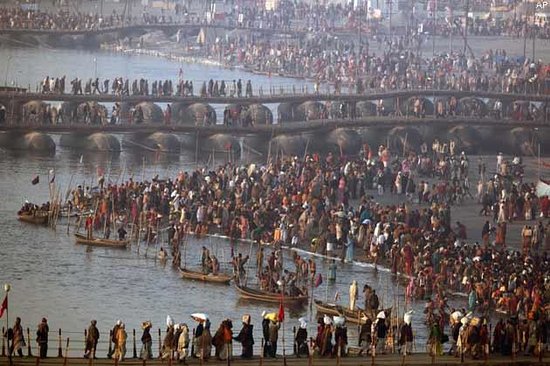The Kumbh Mela 2019, to be organized in Allahabad at the famed confluence of rivers Ganga, Yamuna and fabled Saraswati The Kumbh Mela 2019, to be organized in Allahabad at the famed confluence of rivers Ganga, Yamuna and fabled Saraswati, shall be the largest ever religious congregation spread over almost 45 days (through January and February). Going by a conservative estimate, almost 20 lakh people shall be residing at the site, with almost as many floating in and out every day.

On key days, footfall can go as high as 2 crore people per day—a huge number by any standard.
Again by a very conservative estimate, at least 200 tonne of solid waste is expected to be generated in the Mela area every day. Can we really afford to leave this waste lying around, be buried or burned at the site of the largest religious theatre in the world?
While the rationale for effective solid waste management in the Mela is obvious, I am drawing your attention to three most compelling reasons, with a vision for the future of the country—to advance the national swachhta agenda.
Let us take a cue from the words of famous American industrialist and builder Henry J Kaiser—“Challenges are opportunities in work clothes”.
If the Swachh Bharat Mission targets every corner of the country, the modern Metro to the innermost areas, why should the Kumbh Mela be left out? If we can demonstrate a simple and workable system here, we can provide waste management solutions that can be replicated in urban and rural pockets across the country.
Let us do it to reduce environmental pollution
Burial or burning of solid waste in the river flood plain will lead to contamination of soil, groundwater, and river. Leachate from dumps and ash from burning contain toxic substances. Receding flood waters carrying pollutants from the river flood basin mix and contaminate the river, turning it into a carrier of pollutants to distant shores Garbage dumps provide nutritious medium for vector breeding, with risk to health. Complete removal of waste from the area and its scientific treatment and disposal means reduction of environmental stressors from a fragile eco-system.
Let us do it to improve aesthetics of the Mela and redefine international narrative on tourism in India
The Mela is acquiring increasing national and international visibility due to concerted government efforts and social media. The potential of high international visibility offers a tempting opportunity to garner greater commitment for sanitation at all levels.
If effective waste management can be demonstrated with a resultant impact on Mela aesthetics, foreign tourists may return with a renewed narrative on India—a nation with a demonstrable commitment to sanitation and hygiene. Domestic tourists may return as Swachhta ambassadors. That the images captured on selfies will be more beautiful is only the icing on the proverbial cake.
Let us seize this opportunity to energise the nation on sanitation, stem the downward spiral of pessimism and inaction, and raise our ambitions on the subject. Let us demonstrate to our people and the world that WE CAN.
Source: https://timesofindia.indiatimes.com/